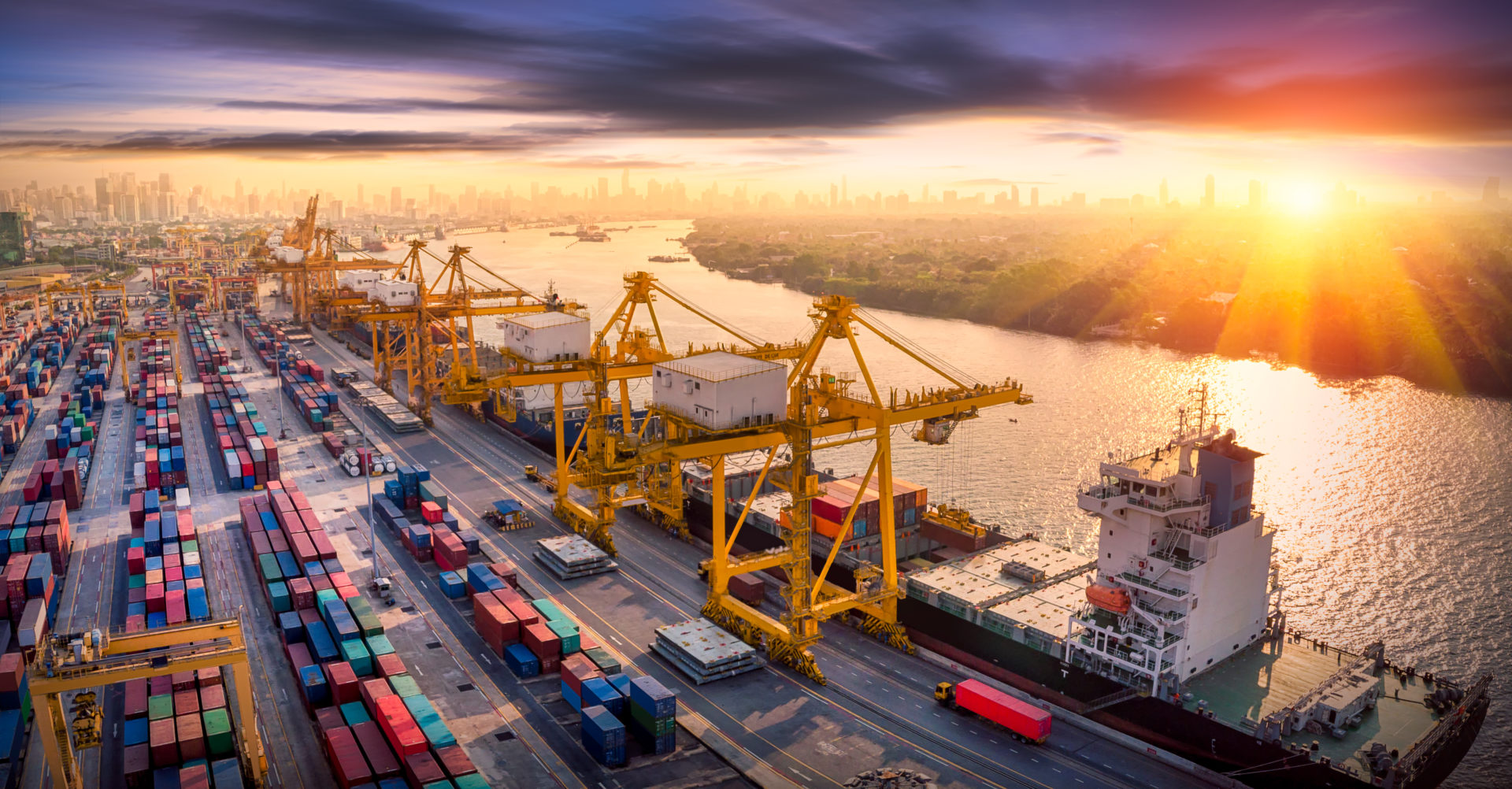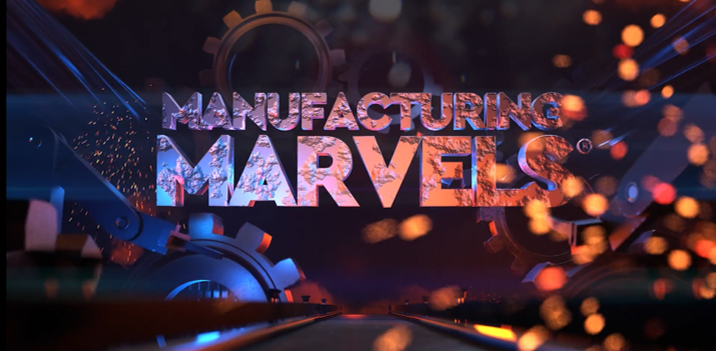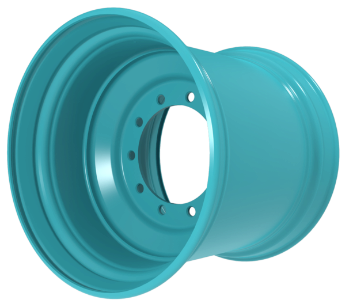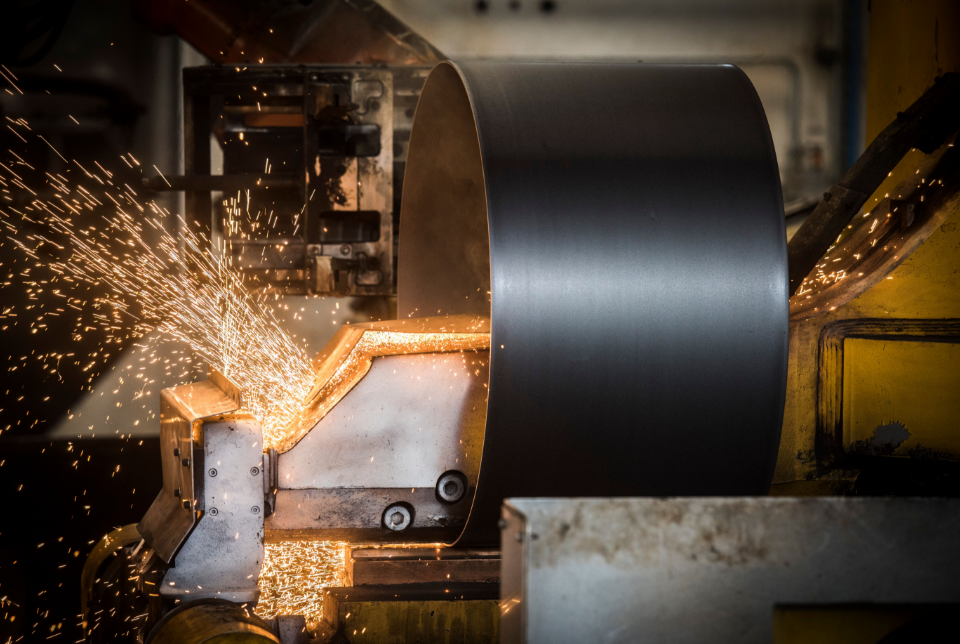How, if at all, are or will wheel designs be impacted by electric and autonomous vehicles?
It is clear that the increasing use of electric and autonomous vehicles in off-highway sectors will have an impact on the design of both wheels and tires; indeed in some sectors, we have already responded to their introduction through the development of new, patented wheel technologies that meet the different challenges these vehicles pose.
It is important though that the design challenges that are raised by electric vehicles and autonomous vehicles are clearly distinguished; they are very different and so require very different solutions.
We have addressed these different challenges in more detail below, but in summary Autonomous Vehicles (AVs) generally require wheels that provide increased durability, strength and longevity whereas the challenge with Electric Vehicles (EVs) is in the application of torque and the different demands this imposes on the wheels and tires.
Are there different design considerations for wheels used on an electric or autonomous vehicle? If so, what are they and why are they different for these types of vehicles?
Autonomous vehicles
In off-highway applications, autonomous goods vehicles (AGVs) are already being widely used in ports around the world. In these harsh and demanding environments, the vehicles operate 24 hours a day, and handle extreme loads. Although working autonomously, each vehicle’s movements are fully integrated into a carefully choreographed programme, often involving fleets of upwards of 40 AGVs working in harmony. This meticulous planning is designed to maximise efficiency and reduce vessel turn-around times to a minimum and so the impact of a failure on any one AGV has a dramatic and very rapid impact on the operation of the whole port. Consequently, reliability and the assurance of long-life performance are critical requirements in the design of their wheels and tires.
Standard wheels are simply unable to cope with this extraordinary operating environment and so our experienced R&D team worked closely with OEMs, tire manufacturers and port authorities to develop a solution to meet their needs, developing a wheel better able to cope with the increased stresses and so have significantly more resilience to fatigue.
moveeros’ patented Infini-Forge wheel was developed to meet the specific requirements of AGVs through process innovation. The wheels are manufactured through a hot induction forming (HIF) process, which makes them 50% stronger and with a lifespan 50% longer than conventionally manufactured, multi-piece wheels. Whereas these traditional wheels would have a lifespan of some 37,000 hours in these challenging applications, AGV Infini-Forge wheels, with customized geometry, have a lifespan in excess of 90,000 hours and so are considered to be a structural component of the machine.
The HIF process allows great design freedom whilst achieving greater manufacturing accuracy, allowing material to be placed where it is needed (and taken out where it is not), leading to an increase in rim strength without a significant increase in weight.
Infini-Forge wheels have been specified for AGVs at a number of ports, including the Port of Rotterdam, Europe’s largest seaport and one of the earliest ports to introduce AGVs. Handling over 460 million tonnes of freight and nearly 130,000 vessel movements a year, the port sets the benchmark for the design and operation of deep-sea freight terminals and at its heart is a fleet of 300 AGVs. The vehicles operate 24 hours a day, seven days a week to keep the port operating smoothly and efficiently, moving freight containers between ships and a maze of storage areas.
Given such a demanding operating environment, a vehicle breakdown of any description severely affects both operational and financial performance; and with tire-pressures of 10 bar, a failure of the wheel or tire could have catastrophic consequences. Our Infini-Forge wheel not only delivers technically, but also provides a reassurance of quality and safety, major considerations when the consequences of failure are so severe.
Now established in the material handling sector, AVs are also widely used in surface mining applications, where much like their use in material handling, the driving force behind their introduction is increased productivity, their use requiring no breaks and therefore enabling virtually 24/7 operation.
The issues in this sector are therefore very similar, with reliability, durability and long-life performance all critical requirements. moveero’s design team responded to this through a strengthened wheel design to cope with the increased stress.
Electric vehicles
Across all off-highway sectors, electric vehicles are likely to pose a very different set of design challenges to AVs. The issue for EV manufacturers and operators is much more about managing the application of torque. Because electric motors deliver torque much more rapidly than diesel engines, tire slippage is the major issue which needs to be addressed – both between tire and rim and tire and ground surface.
In agriculture, tire slippage is a known issue and one that has become increasingly problematic over recent years, with the combination of larger tractors, increased horsepower, larger implement machinery, low inflation pressure (with Central Tire Inflation Systems), and heavier loads all contributory factors.
Working in collaboration with tire manufacturers and OEMs, we developed a solution to this problem – our patented Profi-Grip wheel. The design of the Profi-Grip wheel rim features a strengthened flange which both minimizes rim-shrinkage and serves to protect the tire when used at low pressure. The wheel also incorporates our unique Profi-Fit TW design, which allows high-load capacity tires, with very stiff sidewalls, to be mounted easily and with no risk of tire damage.
Other solutions either use thicker materials, which significantly increases the weight of the wheel, or weld a reinforced ring to the flange, which results in uncontrollable shrinkage of the rim in this critical area of the wheel. Extended knurling is also used to offset this problem but, in case of tyre slippage due for any reason (e.g. too low pressure), extended knurling could create serious damage to the tire beads.
Extensive track and field tests were conducted by our R&D team, which confirmed that the Profi-Grip rim design completely eliminates tire slippage and we are therefore confident that we have the experience, expertise and necessary tools to respond both to tire slippage, and to completely new challenges that the use of EVs may present.
Some of these challenges can be addressed through tire development, with potentially wider tire bead designs, but in turn this impacts the rim design. This is an evolving process, but moveero, we have the tools to address the challenges and solve problems, readily working with equipment tire OEs to address these problems, develop solutions and operate in active field tests to ensure peace of mind for all involved.
In the construction sector, the issue is also likely to be one of tire slippage, which may in time lead to a demand for wider tire beads, as well perhaps as wider tires and larger diameter wheels to help spread the torque.
Torque application may also lead to challenges with bolted joints and the disc design, but these are also problems we have lots of experience solving, on combines, hubs and spindles and construction machinery, so we are again well placed to work with partners to deliver solutions should EV operations require them.
As well as developing solutions for tire slippage through Profi-Grip, we have solutions for other machines with high torque requirements and are well prepared to respond to EV manufacturers with positive solutions when required. Our patented Profi-Grip technology is proven to solve today’s problems, predominantly in the agricultural sector, and it is highly likely that an evolution of its design will address tomorrow’s challenges too, whether it be in agriculture or adapted to suit the construction sector requirements. We will continue to build on our vast reservoir of knowledge and expertise to develop intelligent and efficient solutions through our engines and R&D Centers.
It is possibly too early to know with certainty what all the challenges are which lie ahead in these sectors, but we are prepared and equipped to meet them and will work with OEMs, tire manufacturers and operators to develop appropriate and effective, long term solutions.
What is or would be the benefit of developing wheels specifically for electric and autonomous vehicles as opposed to using traditional designs?
Traditional designs simply may not deliver the performance requirements that are demanded by AVs and EVs and so new solutions will be needed. Rather than being completely new designs though, these new wheels are likely to be evolutions of our existing technologies, both product and process, building on the benefits of proven solutions to respond to the needs of these new machines.
Infini-Forge and Profi-Grip are two examples that have helped solve specific problems faced by two major market sectors and their application could readily be used to the benefit of others. Looking at new designs or manufacturing processes delivers unique benefits and the uniqueness of what we offer through patents and service offering means that we easily adapt and respond to theses ever changing demands.
Are there any current design features or trends which would be applicable or beneficial for wheels used on electric and autonomous vehicles?
In the EV sector, tire slippage is a clear issue that has affected the agriculture sector for some time and is likely to be one that would also arise with electric vehicles. What we have learnt through the design, development and testing of our Profi-Grip solution provides a solid and proven basis for the development of solutions should the need arise.
Similarly our HIF manufacturing process technology has delivered a solution for the material handling sector, addressing longevity, reliability and stress requirements which will be transferrable to AV applications in other sectors.
How does your company foresee electric and autonomous vehicles impacting wheel designs in the coming years?
In sectors such as material handling, AVs have already impacted wheel design and led to the development of our patented Infini-Forge wheels to accommodate the demanding requirements not possible through standard design. The next stage of development is likely to be in developing tools for condition monitoring, with sensors for crack detection, alerting operators to the need for preventative maintenance. We have already carried out a good deal of work in this area, collaborating with manufacturers and academia to develop solutions. This technology will be invaluable in ports, but will also help unlock the potential for AVs in sectors such as underground mining, where the risk of a vehicle failing three miles underground is an obvious barrier to their introduction in these environments. Clearly if preventative maintenance can be accurately predicted, then vehicles can be taken to the surface at the right time, rather than waiting for a failure to occur.
In other sectors, for example agricultural, the use of AVs is more complicated, and some fundamental questions are yet to be resolved. On a farm the environment is much more varied and unpredictable than in a port or on a surface mine, where operations are typically more repetitive. It is also unlikely that farmers will require 24/7 operation and so the challenges for AV suppliers and wheel and tire manufacturers will be quite different to those posed by the mining and material handling sectors. It may be though that if AVs are used, it would be for specific operations which are perhaps more predictable and/or working in tandem with traditional vehicles, for example harvesting, where an AV could follow a combine during harvesting, collecting and transporting the crop.
Although we have a good understanding of what the issues are likely to be in these sectors, to fully understand each market’s requirements, we will continue to work closely with OEMs, tire manufactures and end users to make sure we develop solutions that are right for each of them. Clearly, agriculture and construction will have different challenges to material handling and mining, but our experience across all these areas means we can bring solutions and technologies that are proven in one sector to help solve the problems another is facing.
We also have a long history of collaborative, partnership working and because we have established, cross-industry relationships, and work with all the major tire manufacturers (each of whom may have slightly different challenges) we can develop a common solution. Our world-class testing and research facilities are key to this product development, with our experience and expertise, as well as our unique lab and field testing capabilities meaning we are ready to work with our partners to deliver the very best solution to meet their needs.
Click here to download article

